What We Treat
If chronic pain, tightness, weakness, or injury keeps you from moving and living the way you want, Viverant Physical Therapy is ready to help. Here’s a quick summary of conditions that our licensed Physical Therapists treat.

Low Back Pain
Read More
Potential causes are numerous, ranging from soft tissue injuries and spinal stenosis (narrowing of the nerve channels in the spine) to disk herniation and arthritis. Pain can be dull or sharp and felt in your back as well as down your legs, and can include tingling or numbness. You may have difficulty bending or lifting.
Treatment is determined by the source of the pain, but can include spinal manipulations, core strengthening, postural balance exercises and flexibility training, as well as cupping and dry needling.
Request Appointment
Shoulder Pain
Read More
Causes can include rotator cuff strain or weakness, a strained or torn labrum, imbalances or injuries to the muscles around the shoulder blade, or structural issues with the shoulder joint resulting from shoulder separation or a similar injury. You might experience limited mobility, pain or weakness in your upper arm, shoulder and neck, even tingling that extends into your arm or hand.
Treatment typically includes exercises to strengthen muscles and restore mobility and flexibility, as well as cupping and dry needling.
Request Appointment
Knee Pain
Read More
Numerous potential causes, including poor flexibility and muscle weakness around the knee joint, ligaments strains or tears, meniscus tears, and arthritis. Young adults, especially athletes, may experience patellofemoral pain resulting from damage under the kneecap. You might experience pain that increases with movements like squatting or climbing stairs as well as limited mobility and flexibility.
Treatment includes exercises to strengthen muscles and restore mobility and flexibility, as well as cupping and dry needling.
Request Appointment
Hip Pain
Read More
Can be caused by labrum injuries more common in sports like ice hockey, soccer, football, golf and ballet, as well as pelvic imbalances characterized by muscle tightness and/or weakness, or arthritis. You might experience pain in your hip or buttock, pain down into your leg or foot, or poor range of motion you might notice especially when tying your shoes.
Treatment typically includes exercises to strengthen muscles and restore mobility and flexibility, as well as cupping and dry needling.
Request Appointment
Pelvic Floor Dysfunction
Read More
Pelvic floor dysfunction can result from impaired relaxation and coordination of pelvic floor and abdominal muscles. During and after pregnancy, pelvic floor muscles can become strained, especially after a long or difficult labor. Symptoms can include urinary incontinence, constipation, discomfort during sex, and pain in the lower back, pelvic region, genitals or rectum.
We treat the musculoskeletal aspects of pelvic floor dysfunction through manual therapy, neuromuscular re-education, and strength and stabilization exercises.
Request Appointment
Elbow & Forearm Pain
Read More
Causes can include overuse or strain of the wrist or elbow (“golfer’s elbow” or “tennis elbow”) or nerve entrapment — when a nerve loses mobility, flexibility, or becomes compressed by surrounding tissue. You might experience pain and weakness in your upper arm, elbow, wrist or hand.
Treatment typically includes exercises to strengthen muscles and restore mobility and flexibility, as well as cupping and dry needling.
Request Appointment
Wrist & Hand Pain
Read More
The most common causes are overuse injuries like carpal tunnel syndrome or De Quervain’s tenosynovitis which affects the thumb side of the wrist, trauma from falls or similar injuries, or arthritis. You may experience pain and weakness in your hand and wrist, joint instability, or sensation changes in your hand.
Treatment typically includes exercises to strengthen muscles and restore mobility and flexibility, as well as cupping and dry needling.
Request Appointment
Lower Leg Pain
Read More
Potential causes include tight muscles or muscle strains, tendinitis, or poor foot mechanics (including unsupportive footwear). Athletes who play sports such as basketball, tennis or soccer can be especially prone to tendon strains or tears. You may experience aching, tight, cramping or squeezing pain, especially during exercise.
Treatment includes exercises to strengthen muscles and restore mobility and flexibility, as well as cupping and dry needling.
Request Appointment
Ankle & Foot Pain
Read More
Often the result of soft tissue or bone injuries such as ankle sprains, but can also be caused by poor foot mechanics (or footwear) that lead to tendonitis, bunions or plantar fasciitis (especially common in runners). You may experience limited mobility, swelling and pain around the ankle joint or swelling, redness or soreness around toes and toe joints, or a sharp pain in your heel.
Treatment includes exercises to strengthen muscles and restore mobility and flexibility, as well as cupping and dry needling.
Request Appointment
Headaches
Read More
Includes tension headaches, migraines, and concussion-related symptoms. Potential causes include head trauma, stress, poor posture and ergonomic positioning at work, uncorrected eyesight, or increased use of screens (computers, phones and tablets). Symptoms can also include sensitivity to light and sound, nausea, dizziness, ringing in the ears, and fatigue.
Treatment may include postural alignment training, ergonomics education, joint and soft tissue mobilization, intraoral mobilizations, and dry needling.
Request Appointment
Long-COVID
Read More
The symptoms experienced by people struggling with long-term recovery from COVID-19 can included shortness of breath, tiredness, fatigue, joint and muscle pain, reduced range of motion in ribs, back or chest, and dizziness.
Treatment can include stretching, strengthening, range of motion, and endurance training while vital signs such as heart rate, blood pressure, oxygen saturation, and rate of perceived exertion are monitored.
Request Appointment
Temporomandibular Dysfunction
Read More
Common symptoms of Temporomandibular Dysfunction (TMD) are limited jaw opening, locking, clicking, headaches, facial pain, ear ringing and post-surgical rehabilitation.
Treatment includes assessing the entire head, upper spine and shoulder region and examining joint movement, soft tissue trigger points, posture, habits and other factors. Therapeutic techniques may include dry needling, manual therapy, neuromuscular re-education, strength and stability exercises, relaxation training, education and behavior modifications.
Request AppointmentIs Physical Therapy right for you?
Physical Therapy can be helpful in treating conditions ranging from sore joints and muscles to lower back pain to headaches. Sometimes, PT is about recovering from a specific injury or surgery. But for most of our patients, physical therapy is a way to feel better, get stronger and enjoy their lives more.
If you’re not sure where to start, a one-on-one meeting with a Viverant Physical Therapist will give you a chance to talk about what you’re feeling, look at your range of motion and body mechanics, and determine if physical therapy will be beneficial to you. Please note that some services may not be available at all Viverant locations — see Locations for a summary of services offered by the locations near you.
